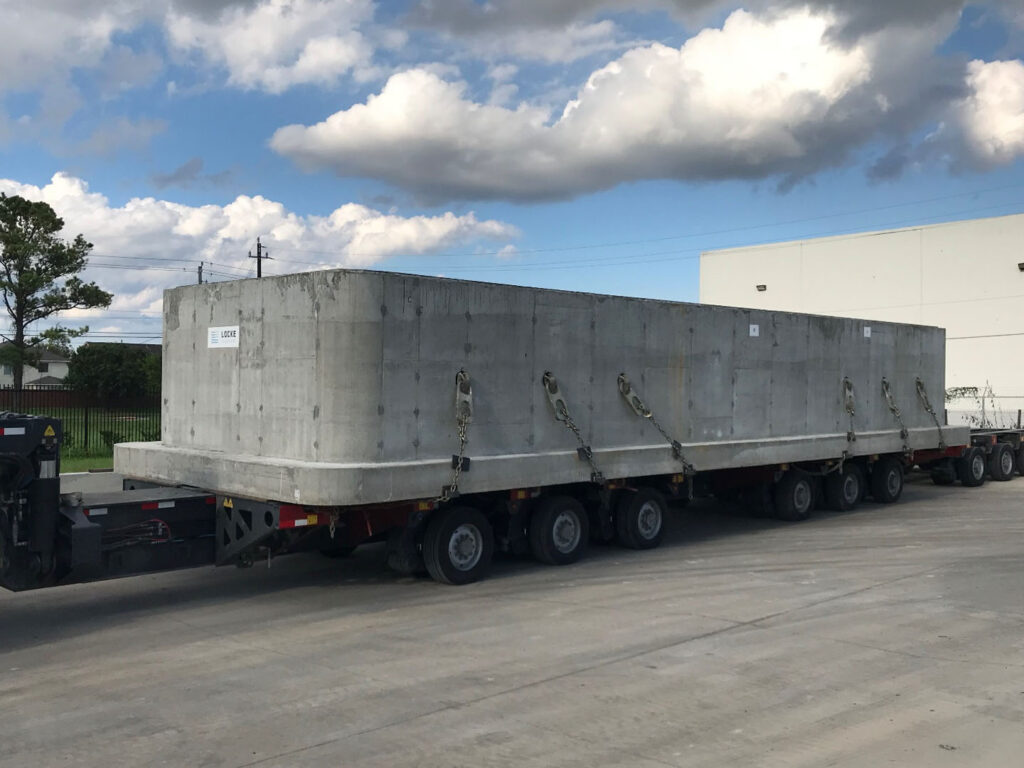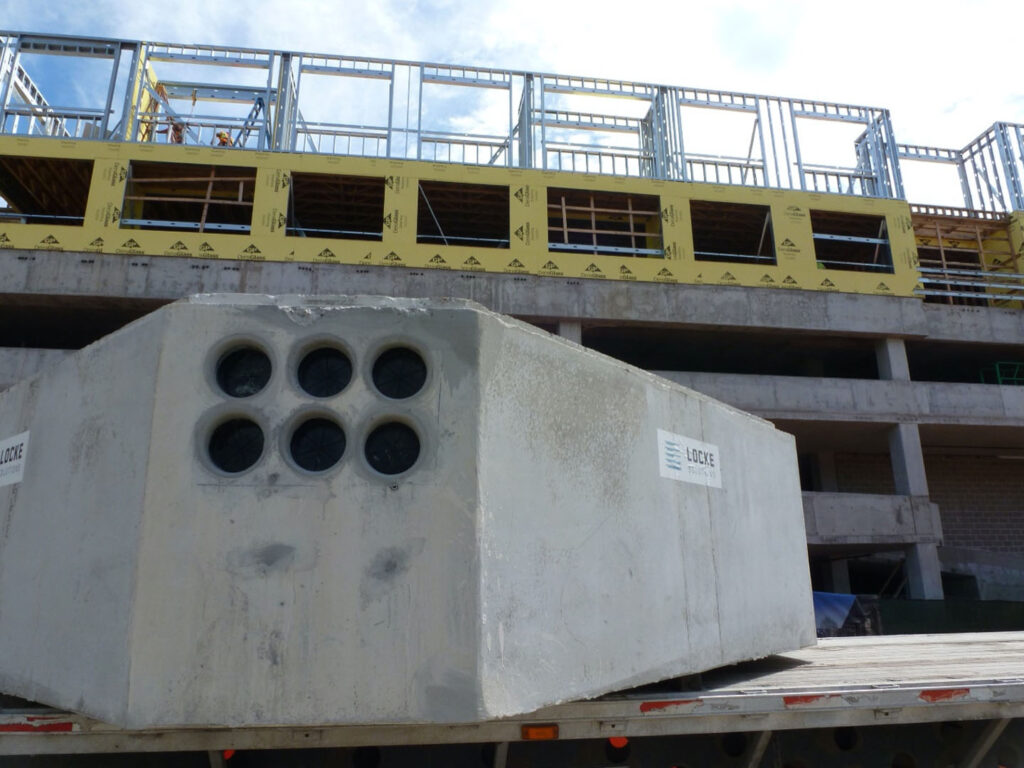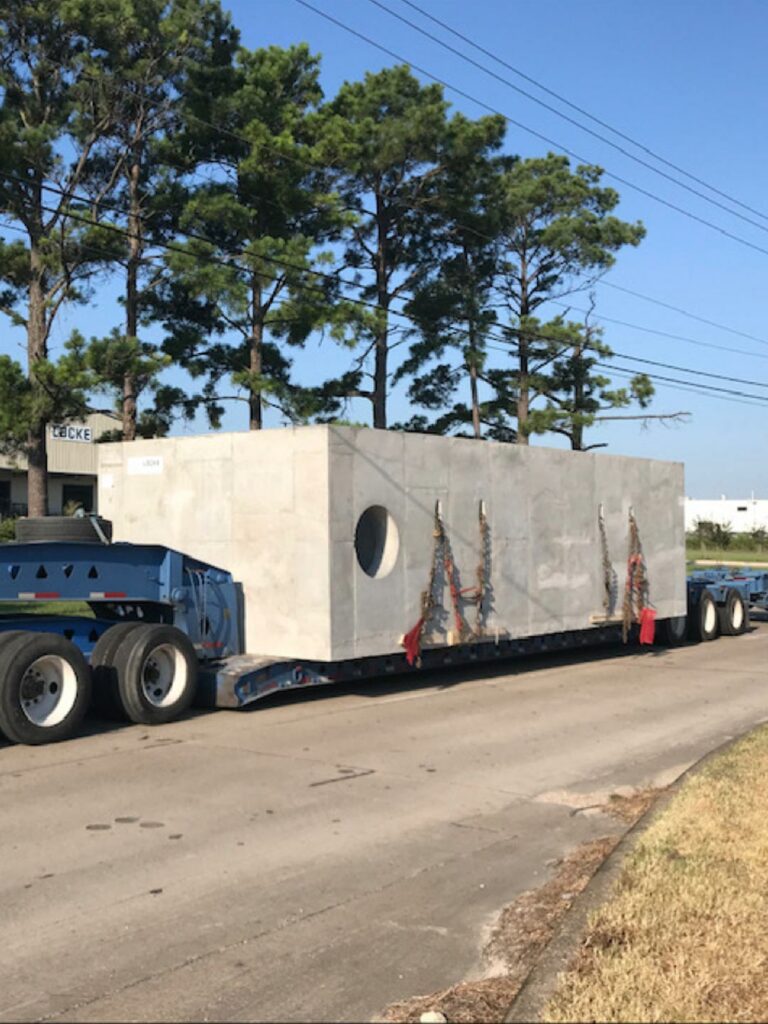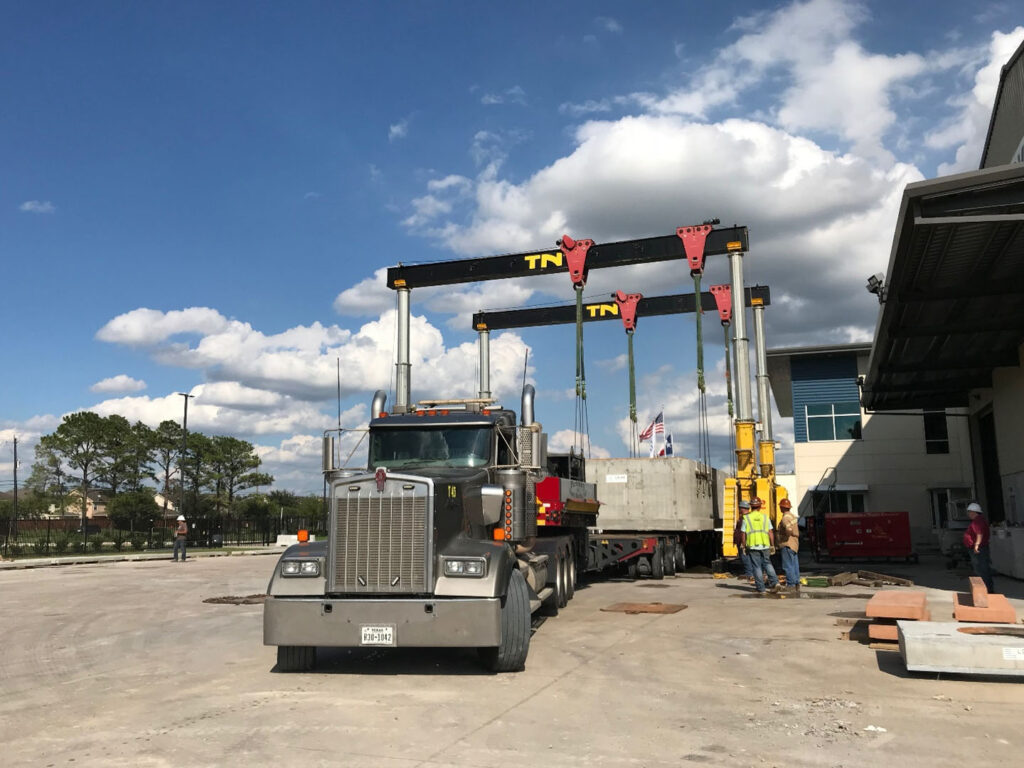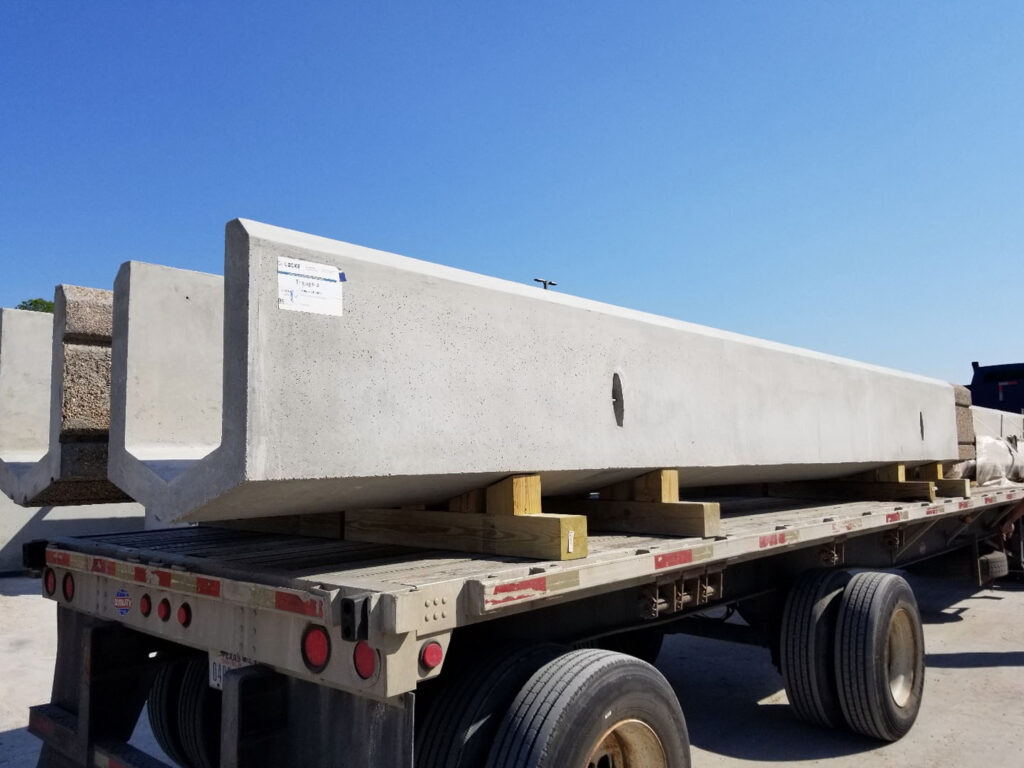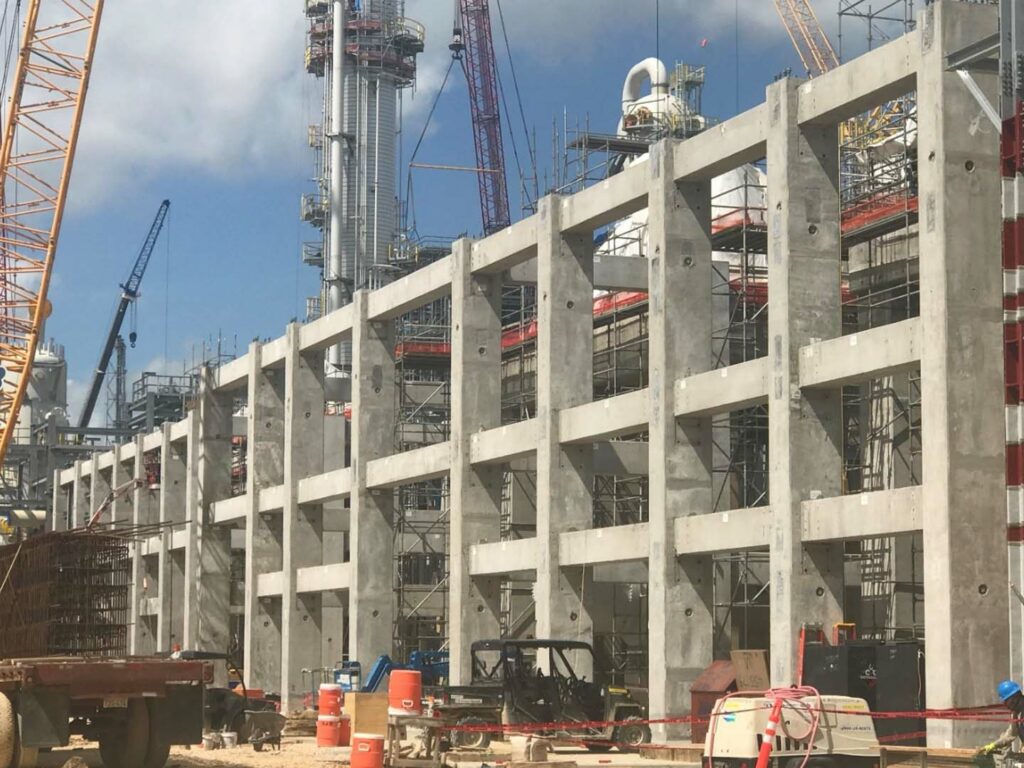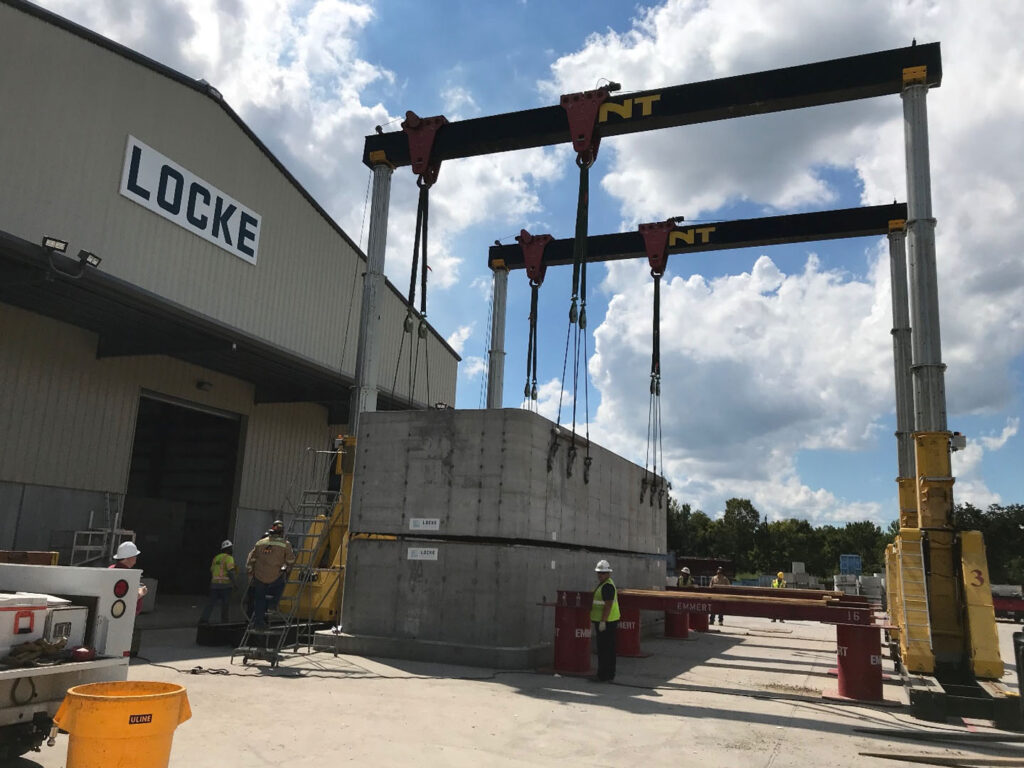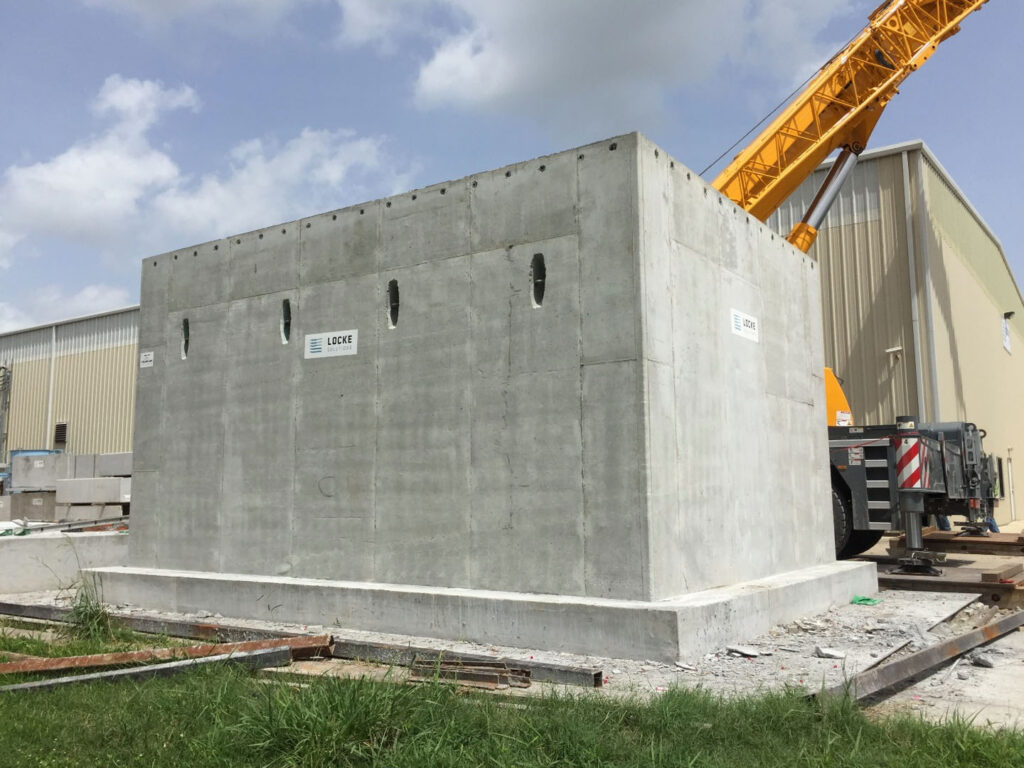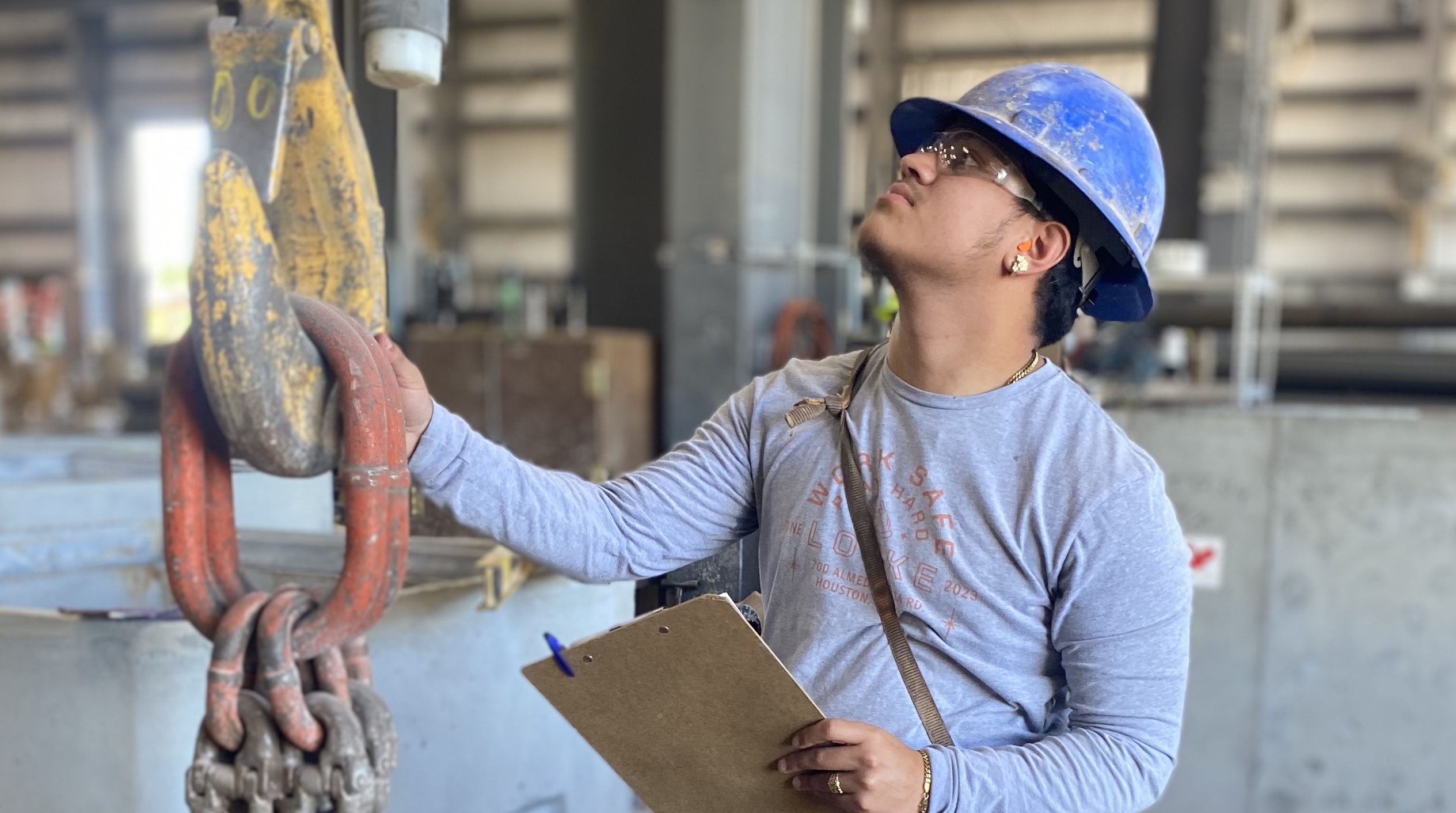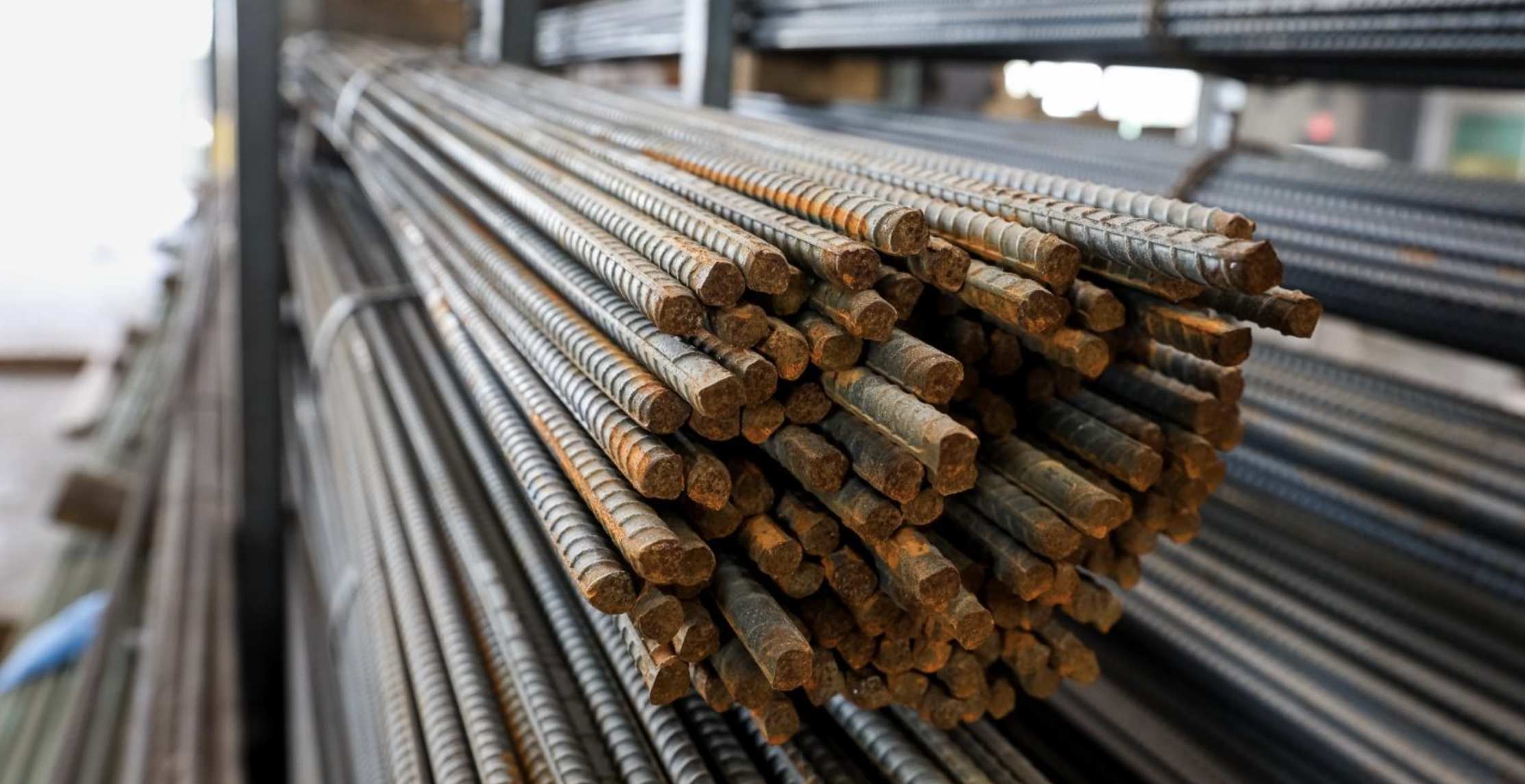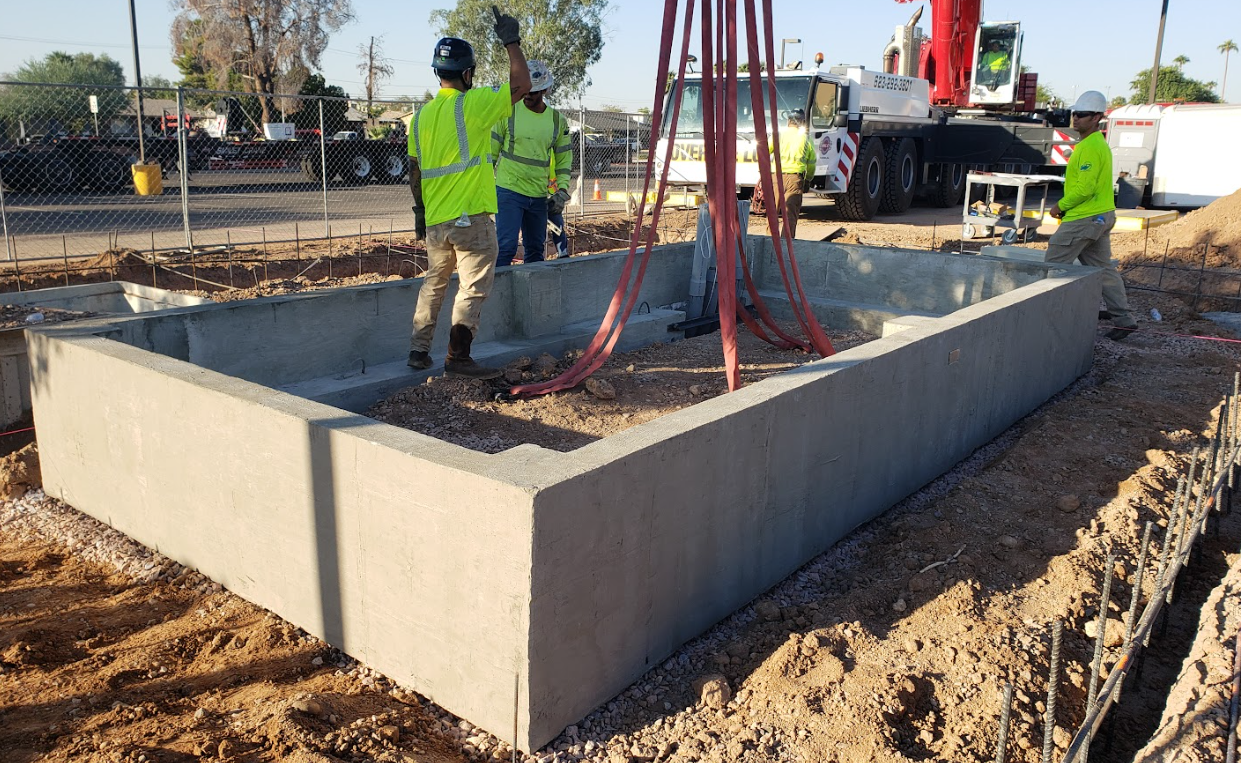Leading Precast
Contact SalesWhen deciding whether to utilize cast-in-place or precast for a large structure, many often wonder if it is possible to make a large and heavy structure precast. The answer is yes, you absolutely can. They next question will usually be, how do you ship such a large structure and what would this cost? The main limitation with producing a large structure precast is generally transporting it to the jobsite. However, shipping large precast structures is successfully executed all the time and becomes a seamless process with careful coordination. Let’s discuss the possible challenges with transporting these structures, the associated costs, and some other helpful tips to take into consideration when shipping and designing a megastructure.
Shown here is a 190,000 lbs. Sump bottom
Shipping a Wide Structure
Shown here is a wide manhole
Shipping wide structures can present more significant challenges. A wide structure may require police escorts, pilot vehichles, and permits. A structure that is over 8’-6” wide but less then 12 feet wide will require a permit that can range from $630-$950. Structures that are over 12 feet wide but less than 14 feet wide will require an escort and a permit that can cost between $930 to around $1,600. Structure that are over 14 feet wide but are less than 16 feet will be required to have two esorts and a permit. This can cost between $1,950 to $2,300. Structures that are over 16 feet wide will require careful coordination with the Department of Transportation. The structure will also need permits and escorts that could cost more than $2,500. The reason that wider structures require more permits and escorts is because they take up multiple lanes. This can make transporting wider structures a little more challenging. However, with a plan in place and coordinated efforts, transporting these structures can be a more efficient process than cast-in-place.
Shipping a Tall Structure
Height can also influence the shipping of the structure. Shipping a structure that is taller than 14 feet will involve escorts and may also require support from utility companies to move or lift powerlines that may interfere with shipping these tall structures. Routes are also strategically planned to avoid bridges for taller structures. When the appropriate routes are decided for transportation, shipping taller structures becomes a more simplified process.
Shipping a Heavy Structure
Weight can also be a factor when shipping precast concrete products. If a structure’s weight is greater than the load capacity, a permit will be required. If the product weighs between 46,000 and 60,000 lbs, the permit’s cost can range between $350-$400. Costs of the permits will increase as the weight of a structure increases. Structures that are over 85,000 lbs will require special trailers with additional axels to carry and distribute the structure’s weight. The equipment will allow for easier handling of the product. Structure’s with weights up to 175,000 lbs may require additional special equipment that could range from $5,750 to $23,000 depending on the overall size of the structure. For more in-depth information regarding the cost of precast concrete, you can check out our article https://lockesolutions.com/how-much-does-precast-concrete-cost/
Tips to Consider When Shipping Precast Structures
While there can be a few challenges when shipping precast structures, there are usually several ways to work around these challenges. First, precast products are usually constructed in shorter sections, so height is often not an issue when transporting these structures.
With many precast structures being made in shorter sections, this drastically diminishes the challenges faced when shipping the product by reducing the weight.
In the initial phase of designing a product, if the customer requests a large width for the structure, the precaster may be able to create a design that decreases the width of the product. This may mean decreasing the width of the structure and increasing the length or depth of the structure to accommodate the required volume or size that is needed of the structure. This can often be executed with structures that go underground, such as manholes. Another method may involve a specialty engineered structure that can be assembled in the field. For more information on shipping precast structures, head over to our blog https://lockesolutions.com/shipping-precast-products/
Final Thoughts
While shipping large precast structures can seem challenging at first, many of these challenges are easy to overcome with careful coordination. Considerations can also be made when designing the structure that will make for an even smoother shipment of the product. Shipping precast products is a more simplified process than many realize. If you are considering precast for your large structure, you can feel confident knowing that producing and shipping a mega precast structure is extremely achievable.
Stay tuned for our next article.
We hope this article was helpful. Please send in your questions to info@lockesolutions.com and we would be happy to help answer them.






